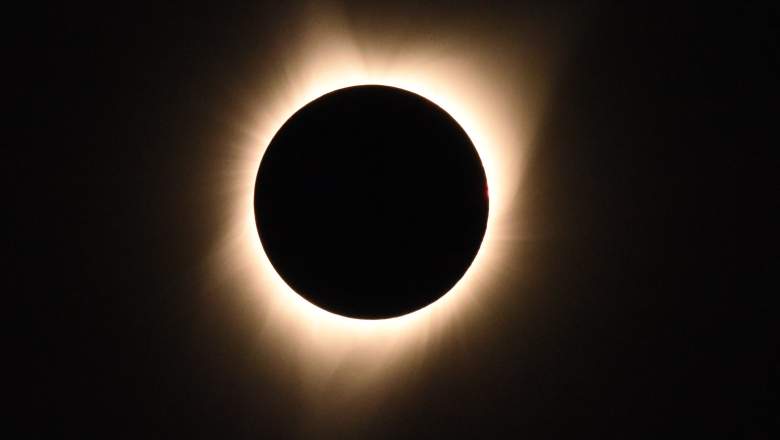
A total solar eclipse will be visible in parts of South America starting on Monday morning, December 14. Unfortunately, it won’t be visible in the United States. The good news is that a number of live streams will be available to help you watch the solar eclipse and feel as if you were there. Read on to learn more about the solar eclipse and see videos where you can watch live right here.
Times for the Solar Eclipse
If you’re wanting to watch the solar eclipse in the United States, the timing will require that you start tuning into a live stream online around 8:33 a.m. Eastern on Monday, December 14, with the eclipse concluding at 1:53 p.m. Eastern, Space.com reported. Most live streams will begin in the morning.
The totality itself will only last for about 2 minutes and 10 seconds.
According to NASA, this eclipse will range from Saavedra, Chile, to Salina del Eje, Argentina. Observers in this path will see a total eclipse, with a path of totality averaging about 56 miles wide. People outside of this region (but close) will see a partial eclipse.
A solar eclipse is a rare event. So even though you can’t see the eclipse yourself in person if you’re in the United States, you will likely still want to take time to watch it online as it happens.
Live Streams for Watching the Solar Eclipse
NASA’s live broadcast will begin at 9:40 a.m. Eastern with views of the eclipse from Chile on NASA’s Media Channel, which is also embedded below. Different streams will be playing on the channel until the solar eclipse coverage begins.
Then at 10:30 a.m. Eastern, there will be a program in Spanish starting on the Public Channel.
Slooh’s Star Party Live Show begins at 9:30 a.m. Eastern (14:30 UTC/8 PM IST). In other time zones this is 6:30 a.m. Pacific/7:30 a.m. Mountain/8:30 a.m. Central.
Time and Date will also be hosting a total solar eclipse live stream on December 14. This one will begin at 14:30 UTC, which you can watch below. You can translate this to your local time using Time & Date’s page here. In the Eastern Time Zone it’s 8 a.m. and in the Central Time Zone it starts at 7 a.m., for example.
The next total solar eclipse visible in the U.S. is happening on April 8, 2024. This one will have a line of totality crossing Texas, through the Midwest, and over Indianapolis, Cleveland, Buffalo NY, over New England, and passing over Maine and New Brunswick, Canada. This will be the first total solar eclipse visible in Mexico since 1991.
Meanwhile, we won’t see the next coast-to-coast solar eclipse in the U.S. until August 12, 2045.
Another total solar eclipse outside the U.S. will happen on December 4, 2021, but it will only be visible in part of Antarctica, Space.com reported. It will be an unusual eclipse, with totality moving from east to west across Antarctica. Most eclipses move from west to east.
An annular solar eclipse will also take place in the U.S. on October 14, 2023. This is when the sun appears to be a ring around the moon, as the moon passes between the sun and the Earth.
READ NEXT: The latest COVID-19 deaths, cases, and updates